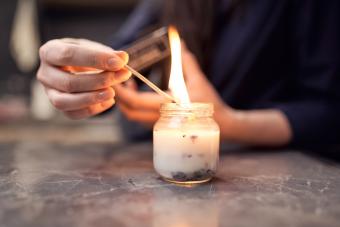
Do you know what's in your commercial laundry detergent? Not to worry, most people don't. You throw it in the washing machine daily without much thought. But knowing what ingredients are cleaning your clothes can be important. Get all the details on what is in your detergent.
Ingredients in Commercial Laundry Detergents
Laundry detergent has been around for a while, like a long while. But, the ingredients used back in the day and now have changed drastically because of science. While every brand, like Tide or All, has its own secret recipe, commercial laundry detergent ingredients typically have a few common chemicals. So, rather than just trusting your detergent, check out the label for a few of these ingredients.
Solvents: Degreaser
When you use a liquid laundry detergent, it typically contains water as a solvent. However, alcohol can also be used as a solvent within laundry detergents. The solvents work to help the ingredients all mix together and dissolve dirt and grime on clothing. For example, the alcohol within your laundry detergent can help to break up grease on your shirts.
Surfactants: Stain Lifter
When a detergent gets your clothing sparkling clean, you can usually thank the surfactants. These chemicals lower the surface tension of water to make clothes get wetter. They also lift stains and suspend them in the water until they can be rinsed away. A lot of research has gone into developing surfactants that work in both hard and soft water. A few surfactants you might see on the back of your bottle include:
- Alcohol ethoxylate
- Alkyl sulfates
- Ammonium laureth sulfate
- Ammonium lauryl sulfate
- linear alkylate sulfonate
- Sodium laureth sulfate
- Sodium lauryl sulfate
While some claim these chemicals can be toxic and irritating, Environmental Health Insights did a study on these chemicals showing their safe use in household cleaning. So, it's important to do your research and use your best judgment when using laundry detergents with these chemicals.

Anti-Redeposition Agent: Protector
Once the surfactants get the dirt off your clothing, you don't want it to come right back. So, laundry detergent makers add anti-redeposition agents to keep the dirt and grime from settling back on your clothing. The fabric actually absorbs these chemicals, creating a barrier against dirt. One of the most common anti-redeposition agents is carboxymethylcellulose, but a few others include polyvinyl alcohol and polyethylene glycol.
Enzymes: Dissolvers
Laundry detergents need a stain fighter. In this case, it's the enzymes. These bad boys work to break down your son's grass stain or that bloodstain. They work just like they do in the body to break down proteins, starches, and fats. The major classes of enzymes working on your clothes and what they break down are:
- Amylase - carbohydrates
- Cellulase - fibers
- Lipase - fat
- Mannanase - food
- Pectinase - fruit
- Protease - protein
Stabilizer: Controllers
In chemistry, a stabilizer is the opposite of a catalyst. Instead of causing chemical reactions, a stabilizer inhibits them. This is a means to control the product's reactions and consistently yield the most consistent product (in this case, clean clothes) possible. You might see these called acyl acid ethanolamides.
Other Ingredients in Laundry Detergent
While those are the major ingredients you'll encounter, you might also see a few other long words you can't pronounce on the back of the bottle. These are:
- Bleach or Oxiclean - This is a whitening agent.
- Brighteners - These are added to laundry detergent so that your colored clothes retain their original color and keep them white.
- Dyes - These give the detergent appealing color.
- Perfumes - These provide that artificial clean smell, and all the best smelling laundry detergents include them.
Green Laundry Detergent Ingredients
When looking at green or homemade laundry detergent ingredients, the list of ingredients you see included is much shorter. You generally use alkalines to get your clothing clean. These help to remove stains and get the dirt out of your fabrics. The typical alkalines used include:
- Borax
- Baking soda
- Lye
- Washing soda
However, you might also include white vinegar to break down stains, sea salt to help remove stains, and a scent enhancer like essential oils.

Knowing What's in Your Laundry Detergent
You might not think too much about what's in your laundry detergent, but it's important to keep an eye on it. Why? Because some chemicals can cause irritation and allergies. The chemicals in detergents are also poisonous, so it's important to keep them away from children. Knowing what's in your laundry can keep you safe and ensure your eczema doesn't flare up.







